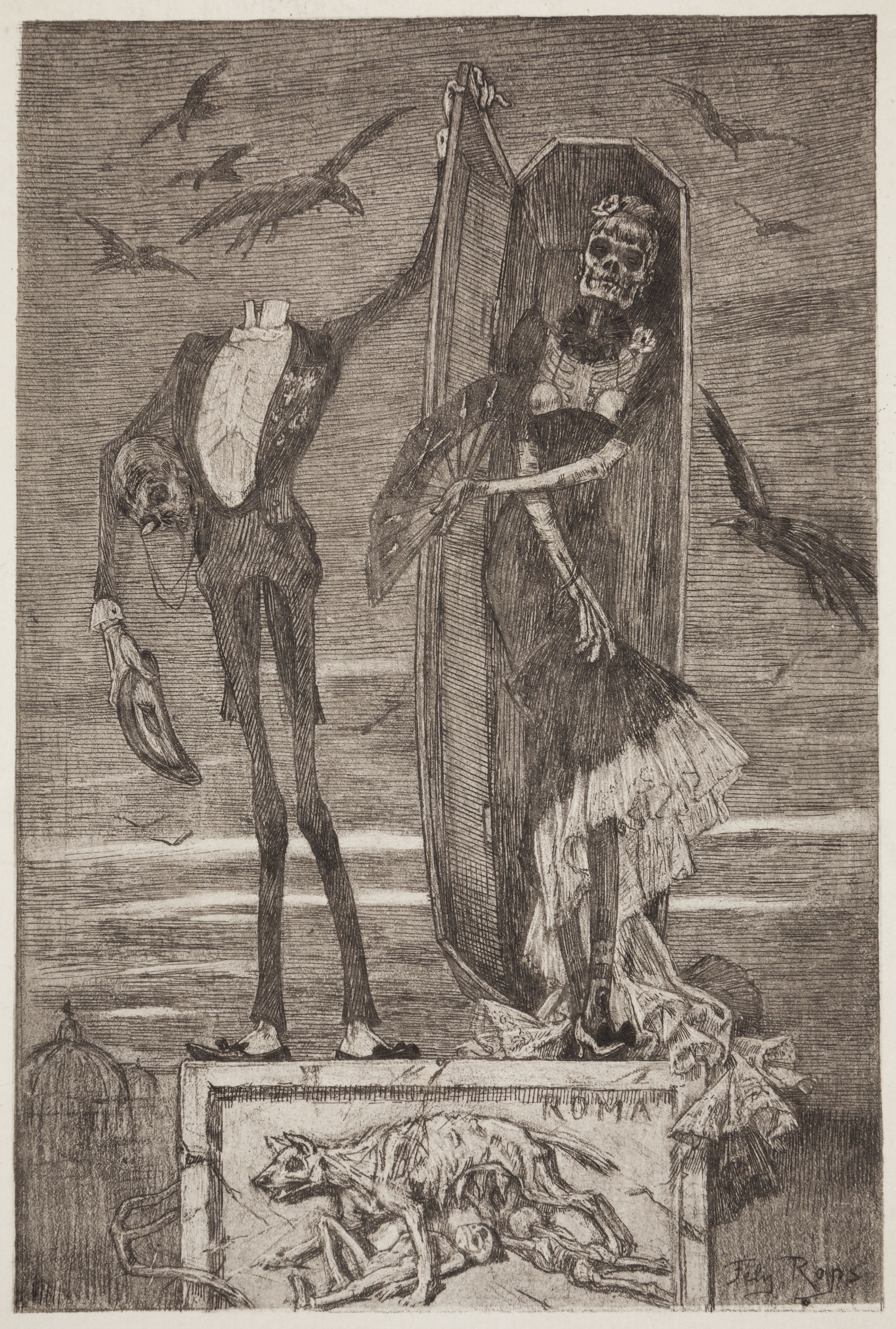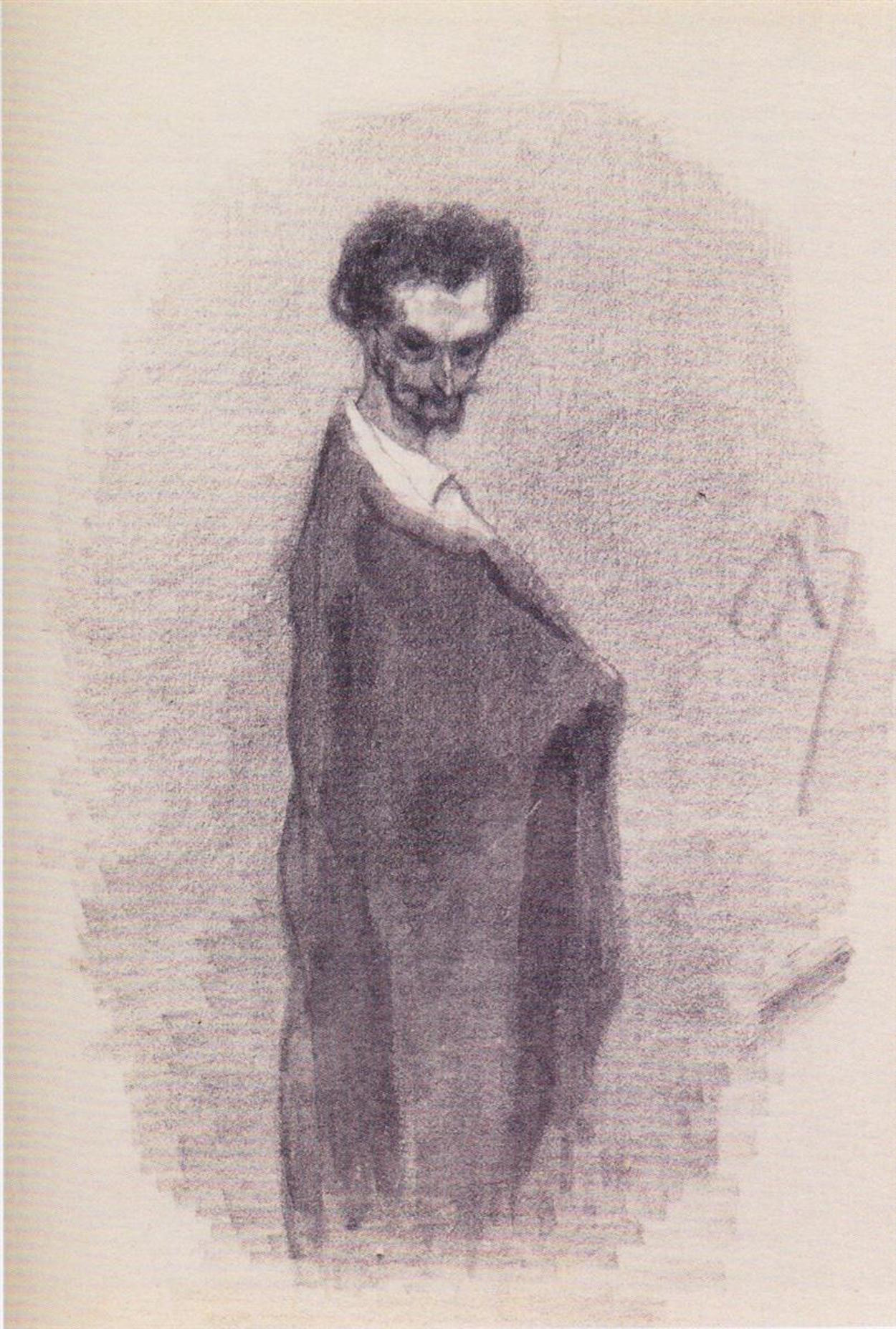For the next three weeks every Saturday we will present prints from the late 19th and early 20th century from the collection of the National Museum of Krakow (Poland). Today's etching is a bit gruesome, but it is a protest against hypocritical bourgeois morality. This work, authored by a 19th-century Belgian artist Félicien Rops, constituted the frontispiece for the novel by Joséphin Peladan, La Vice suprême (1884).
The illustration was placed on the page preceding the title page of the book. The novel addresses the satanic and mystical issues that were so popular in the 19th century while discussing the possible salvation of man through occult practices derived from the beliefs of the ancient East. In a grotesque way, Rops's print depicts a gruesome scene: a skeleton dressed in a tuxedo, holding his own head under his arm, is opening the lid of a coffin which contains the upright remains of a body dressed in a woman's ornate dress. In her right hand, the female skeleton holds the frills of her dress, while her left hand is holding a fan in a flirtatious manner. The neckline of her dress is so low that it reveals protruding artificial breasts attached directly to her rib bones. The couple is standing on a stone pedestal decorated with a relief depicting an emaciated she-wolf with two skeletons under her teats.
Addressing themes related to death became very popular in the 19th century. For the Symbolists like Félicien Rops, death represented the gate which leads from an unbearable, earthly everyday existence, to a higher, better and more spiritual realm of life. The Symbolists often enjoyed combining death with erotica. Both phenomena were combined to assist in destroying the bourgeois order (which they despised) and also assist in escaping the middle-class world. In his late 19th century works, Rops protested with particular cynicism against the hypocritical bourgeois morality by linking a woman and death with the specter of syphilis reaping its abundant harvest.


 Félicien Rops
Félicien Rops